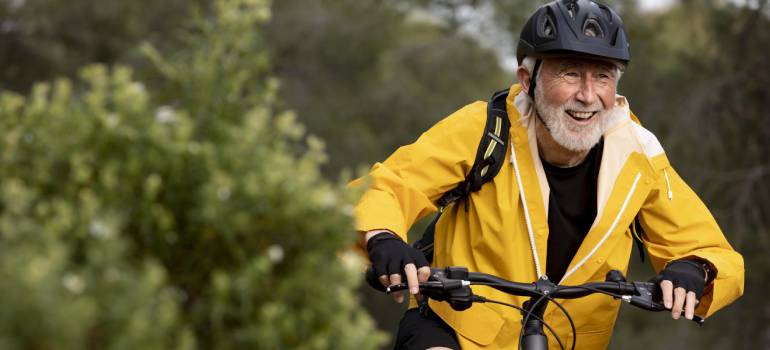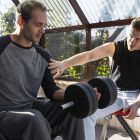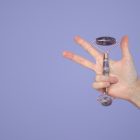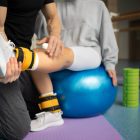Cycling for fitness, leisure, or as a mode of transportation is ideal in the spring. Cycling offers several health benefits, such as greater cardiovascular fitness, increased muscle strength and flexibility, and reduced stress levels, but it is not without danger of injury or pain. But for your better cycling experience, here are the lists of things you need to avoid while cycling to ensure no orthopaedic issues occurs to you.
It would help if you were comfortable on your bike before you “get on board” and start riding. Make sure it’s the right seat size for you. The bike seat should be nicely levelled to support your body weight while also allowing you to move around. Overuse injuries can result from an incorrectly designed chair because extra pressure is imposed on the arms, hands, hips, and knees.
When riding, remember your knee should bend between 25 and 35 degrees along your foot at the bottom of the pedal to establish the perfect seat height. Handlebars should also be properly adjusted. It would help if you bent your elbows when reaching for your handlebars and comfortably use all of the locations on the handlebars. The incorrect alignment of the handlebars can lead to a variety of problems.
Following are the major orthopaedic concerns that develop when cycling, as well as recommendations on how to avoid them after your cycle is ready and of your perfect fit.
Achilles Tendonitis/Feet Pain
Achilles Tendinitis is an inflammation and irritation of the back of the heel caused by inappropriate seat height and placement when cycling. Plantar fasciitis is a frequent ailment that produces discomfort in the bottom of the foot, leading to foot insoles. It’s critical to wear the right shoes to avoid these common foot ailments. When pedalling, a lack of support could cause the foot to fall into the arch. To help with support, you could invest in cycling-specific shoes or use orthotic shoe inserts. For efficient pedalling, shoes should stretch completely under the ball of the foot.
Pain in the lower back and neck
Long periods spent in a single riding position or bending over the handlebars might cause low back and neck pain. You may be placing strain on your back and neck if your handlebars are not properly positioned. Your neck may be hyperextended as a result of an arched back caused by tight hamstrings. Stretching or a core strengthening routine can help avoid low back and neck problems by improving flexibility and form. To strengthen your core, try these three exercises.
Knee Ache:
Knee pain can be caused by many factors, including overuse, cycling position, riding repetition, and persistent stress on the knees. Cycling knee (Patellofemoral syndrome), medial plica syndrome, patella and quadriceps tendinitis, and iliotibial band friction syndrome are all painful knee disorders that these circumstances can cause. Change the placement and positioning of your feet on the petals to help prevent these injuries, or use shoe implants or wedges beneath your shoes. Exercises that stretch and strengthen the muscles may also be beneficial. Make sure your riding position is positioned appropriately once more.
Cycling might cause some orthopaedic issues, but it doesn’t imply you won’t enjoy the weather. You only need to avoid a few things, and you’ll be OK. However, effective treatment from specialists is required to grasp the security of the situation if anything goes wrong, alleviate pain, and prevent a recurrence. Our team of skilled orthopaedists, physiotherapists, and chiropractors at Orthocure can help. We thoroughly assess your problem to determine the core cause and provide an accurate diagnosis. We create a strategy for you tailored to your lifestyle and the severity of your musculoskeletal disease. Our goal is to





